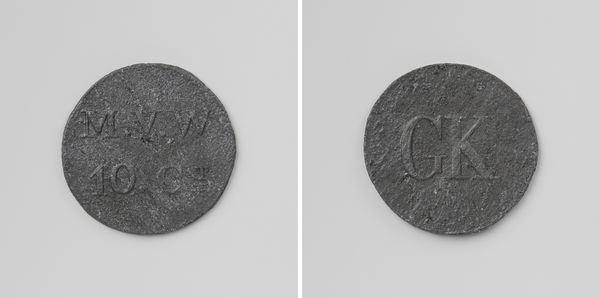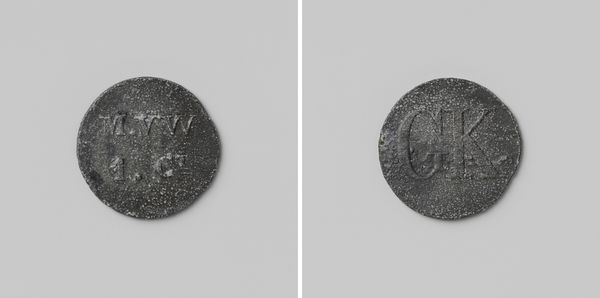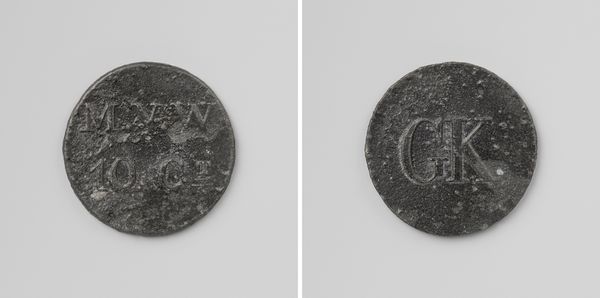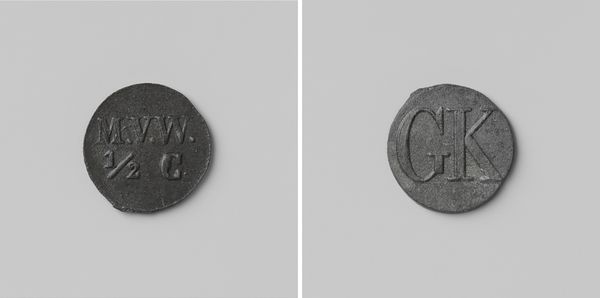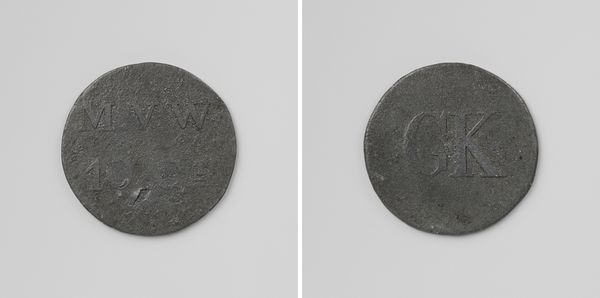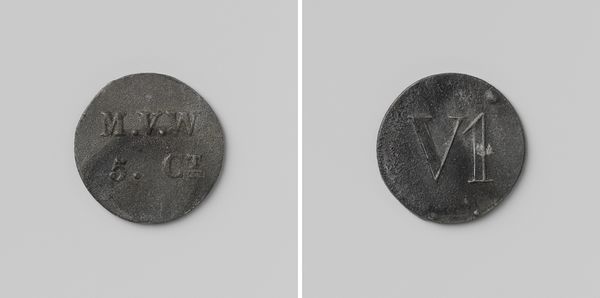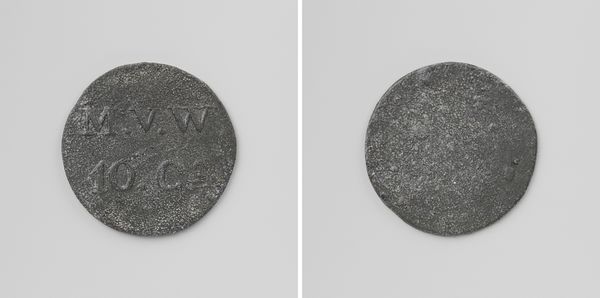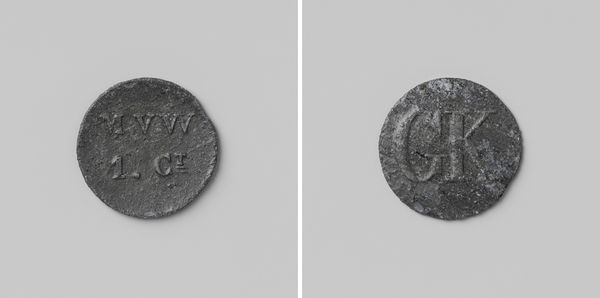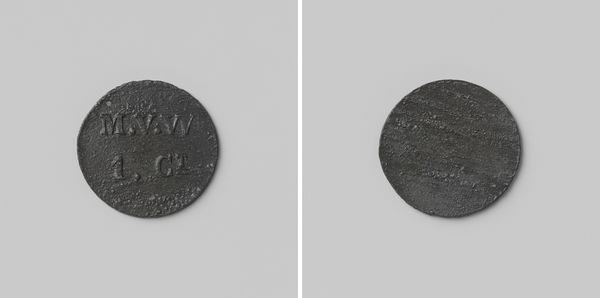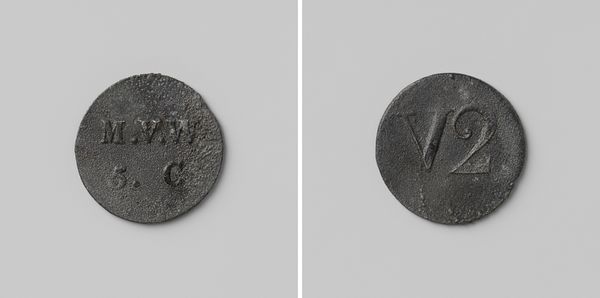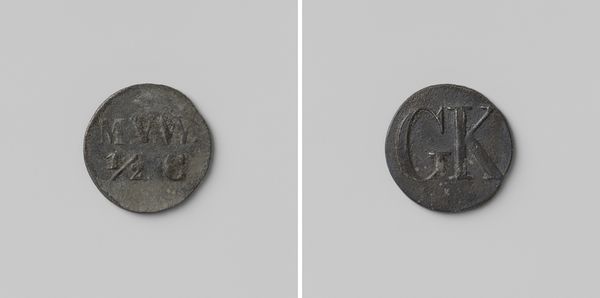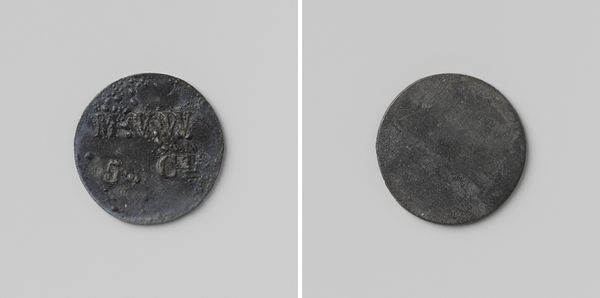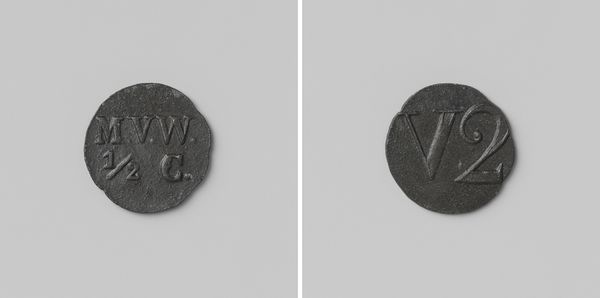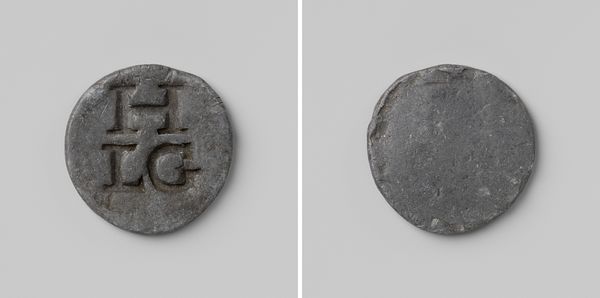
Huismunt geslagen op last van de Maatschappij van Weldadigheid ter waarde van 1 cent, ten behoeve van de Gewone Koloniën 1818 - 1859
0:00
0:00
anonymous
Rijksmuseum
print, metal, relief
#
dutch-golden-age
# print
#
metal
#
relief
#
coin
Dimensions: diameter 1.9 cm, weight 1.95 gr
Copyright: Rijks Museum: Open Domain
Editor: Here we have an intriguing object titled "Huismunt geslagen op last van de Maatschappij van Weldadigheid ter waarde van 1 cent, ten behoeve van de Gewone Koloniën," essentially a house coin created for the Society of Charity to benefit the Ordinary Colonies, dating from 1818 to 1859. Its materiality, particularly the worn metal, gives it a somber and weighty feel, while the relief seems rudimentary. What historical context is wrapped up in this humble coin? Curator: It's a fascinating object precisely because of its humble appearance. These coins weren't legal tender in the traditional sense; they functioned within the closed economy of the "colonies of benevolence." These were essentially work camps established by the Maatschappij van Weldadigheid to "rehabilitate" the poor and unemployed. So, what does it tell us about the Society’s ambition of creating micro-economies? Editor: That is such a dystopian vision. The name "Society of Charity" makes it sound altruistic, but creating separate economies within colonies implies control and perhaps even exploitation. Were the people in these colonies free to leave or spend their earnings outside? Curator: Exactly. These colonies were far from voluntary ventures for many. This coin becomes a symbol of a system of social engineering, reflecting anxieties around poverty and social order in the post-Napoleonic era. The coins confined workers' economic activities within the colony itself, regulating movement and commerce. In this way, we see charity employed not as a method of poverty alleviation but instead one of socio-political control. How might an object like this challenge our preconceived notions of altruism? Editor: I had never considered "charity" as such a controlled practice. Now I wonder how other acts of charity can have complex intentions. Thank you for shedding light on such a complex part of history and questioning norms. Curator: Likewise! Reflecting on objects like this reminds us that the most effective learning occurs when we apply today’s views to yesterday’s happenings, creating informed perspectives.
Comments
No comments
Be the first to comment and join the conversation on the ultimate creative platform.
